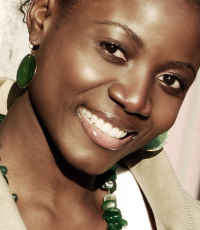
Time Magazine dedicated its October 15th edition to educating the world about breast cancer and highlighting its global impact. A page that caught my eye was a beautiful collage of women from all over the world proudly displaying their traditional clothes. Each was different and unique, yet on this page their stories wove together to make one strong statement—breast cancer is no respecter of person, race or age! What had once been considered an affluent white woman’s disease can now be found in all communities regardless of socio-economic status or geographic location. According to the article, 1 million people this year will develop breast cancer and about 500,000 women will die from the disease, making it the number one deadly female cancer worldwide.
The Facts:
The cause of breast cancer still remains unknown but research has shown some link with estrogen level and exposure. For estrogen-related cancers, treatment with the drug tamoxifen has significantly improved prognosis and survival rates. This, however, seems to hold true in women of European descent with estrogen positive receptors. Receptors are molecular structures on the surface of the cells in our body that bind specific hormones, drugs and chemicals. People with estrogen positive receptors have these molecular structures on the cells in their breast which bind the hormone estrogen in large amounts.
People who are estrogen receptor negative lack these structures. Women of African descent tend to develop severe types of cancer because their bodies contain estrogen negative receptors; as such, they do not benefit greatly from drug targeted treatment. Women in developing countries are also more likely to die from the disease than those in developed ones simply because treatment is limited and they seek medical help only after the disease has spread significantly.
It is estimated that by the year 2020, 70% of all breast cancer patients will be women from developing countries! Why?
1)Increased life expectancy—with better health care and sanitation, African women are not dying at 50years; they are living into their 60s making certain diseases show up now.
2)Adoption of Western culture—we are consuming more processed and fatty foods instead of our naturally grown crops; exercising less and adopting unhealthy lifestyles like smoking tobacco and drinking alcohol.
3)Lack of detection and treatment options or access to such centers is unavailable.
Risk factors for developing breast cancer include:
- Age: the older a woman is, the greater her chances
- Early age of menarche (menstrual periods before 12yrs of age)
- Late age of menopause (>55years)
- Late age when you have your first baby (i.e. >30years old)
- Bottle feeding instead of breast feeding (breastfeeding has shown to be protective since it stops ovulation and cyclic estrogen)
- Family history of breast or ovarian cancer
- Mutations in BRCA-1 and BRCA-2 breast cancer genes
- Previous radiation to your chest
- Obesity
- Smoking tobacco
Please note that some women may have one or more of the above risk factors, yet they will never get breast cancer during their lifetime.
Diagnosis and Detection
Breast Self Examination
For many women in developing countries or low socio-economic areas, breast self exams may be the only option for detecting breast cancer early since access to hospitals or mammogram centers are very limited. Even here in the US, I was surprised to learn that some breast lumps were picked up by women during self examination instead of by doctors or mammogram studies. It does make sense because no one knows your breasts better than you do, which makes monthly exams very important for every woman from the age of 20.
I advice my patients to perform breast exams a week after their menstrual period ends. If you no longer have periods pick a day of the month that is easy to remember (e.g. first day of the month). It is important to do them around the same time each month since your breasts undergo several changes during your menstrual cycle. Some women have more ‘lumpy’ or coarse-feeling breasts during a period of their cycle which then clears up into a smooth texture at other times. Ladies, take the time to know your breasts. Try examining them while taking a bath if you feel embarrassed or uncomfortable doing it at other times.
Get the steps
Check out this video for step-by-step video instructions on how to do an exam
Look at your breasts in the mirror with your hands on your hip. And then raise your arms up over your head. Is there any change in shape, size or color? Do you see any areas of swelling, dimpling, rashes, inverted nipples or unusual discharge or bleeding from nipples?
Now lie down and while keeping your fingers together, use your left hand to feel your right breast and then your right hand for your left. Do a light circular feel or touch and then a deeper one for each section of your breast. Breast tissue extends all the way to your armpit, collarbone, abdomen and sternum. Feel every part going either in a ‘mowing-lawn-pattern’ or ‘sweeping in lines’ from top to bottom.
Breast exam by your doctor
The current recommendation is to have your doctor examine your breasts every 1-2 years beginning from the age of 20years. Preferably, this is something you can have done during visits to your Obstetrics/Gynecology doctor for your routine pelvic exam and pap smear.
Mammogram
A mammogram is a very sensitive tool for detecting any changes in your breast sometimes 2 years before you can actually see changes. It works like an x-ray machine but the radiation from it is very small and not considered harmful. Ask your doctor when best to begin having mammograms done. Generally, it is recommended that women 40 years and above should have one done every year. However, women at high risk for developing breast cancer, who have a family history of breast or ovarian cancer, or have had previous chest radiation, should talk to their doctor as to when best to begin screening—it might be at a much earlier age.
The test involves placing one breast on an x-ray machine which is pressed down slowly onto the breast until some pressure is felt. This is to help spread out your breast tissue enough to get pictures of every inch. The x-ray itself lasts about 3 minutes; some of my patients have complained that the test can be rather uncomfortable or painful. To help with this, plan on having your mammogram done a week after your period when your breasts are less tender. If it is alright with your doctor, you can also take an aspirin or another pain killer just before you go in for your mammogram. I also suggest that you alert the technician or doctor during the exam of any discomfort you may feel.
Other helpful tips to make the day a bit easier:
- Wear clothes that will make it easy to stay covered from below during the exam (e.g.blouse and pants or skirt)
- Do not use deodorant or underarm powder as this can form shadows on your x-ray film.
- If you have had prior breast surgery or implants, tell the doctor or technician in advance.
- Keep a copy of your films and take them with you each time you have a mammogram to help compare and identify significant changes in your breast
Web resources for information on:
1) Mammogram centers near you. Visit: http://www.fda.gov/cdrh/mammography/certified.html or call the National Cancer Institute’s Cancer Information Service toll free at 1-800-422-6237 (TTY is 1-800-332-8615). For women in other countries, please use your primary care doctor as a resource for locating a center and getting frequent updates.
2) Types of breast cancers and treatment options
http://www.mayoclinic.com/health/breast-cancer/HQ00348
http://www.breastcancer.org/treatment/
3) Stories and advice from women with breast cancer
http://www.cancersurvivors.org/Support/emotional/stories2.htm
http://www.pinkribbonshop.com/index.asp?PageAction=Custom&ID=2
http://www.komen.org/intradoc-cgi/idc_cgi_isapi.dll?IdcService=SS GET_PAGE&nodeId=575

